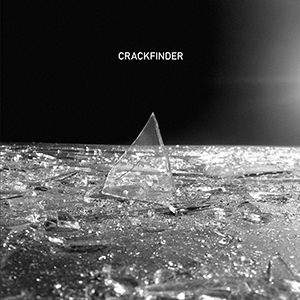 Recorded live in 2016 under the name Sono Genera, the trio of Jérôme Noetinger (tape, electronics), Robert Piotrowicz (synth), and Anna Zaradny (saxophone, computer) are all prolific artists on their own, but each work in distinctly different styles under that nebulous umbrella of experimental music. Piotrowicz has mostly focused on modular synths during his career; Noetinger’s body of work is multidisciplinary and heavily rooted in tape manipulation, and Zaradny is a composer whose primary instrument is the computer and occasionally horns. With that in mind, it is unsurprising that the core elements of Crackfinder sound as if they are drawn from all over the place from an instrumental standpoint, but these distinct styles end up sitting alongside each other very nicely as a cohesive piece of music.
Recorded live in 2016 under the name Sono Genera, the trio of Jérôme Noetinger (tape, electronics), Robert Piotrowicz (synth), and Anna Zaradny (saxophone, computer) are all prolific artists on their own, but each work in distinctly different styles under that nebulous umbrella of experimental music. Piotrowicz has mostly focused on modular synths during his career; Noetinger’s body of work is multidisciplinary and heavily rooted in tape manipulation, and Zaradny is a composer whose primary instrument is the computer and occasionally horns. With that in mind, it is unsurprising that the core elements of Crackfinder sound as if they are drawn from all over the place from an instrumental standpoint, but these distinct styles end up sitting alongside each other very nicely as a cohesive piece of music.
Crackfinder may be a live recording, but the trio has edited it perfectly for the recorded format.Split into two side-long pieces, the first half is the more challenging and complex, while the latter is a lengthy tension relief."The One Who Searches for Cracks" is instantly a mélange of synth pulsations and metallic snapping noises that expand over wide open spaces and stuttering treatments.Augmented by a pleasant sense of reverb, a wheezing bit of organ comes in and everything jells together wonderfully.
Throughout this album the trio carefully balance a sense of chaotic improvisation with distinctly rhythmic segments, such as the percolating synth sequences peppered throughout here.There is a constant flow and build to the sound, with these disparate elements swirling together effortlessly.As it progresses, Zaradny’s saxophone pops up sounding like swarms of birds flying above Noetinger’s tapes and Piotrowicz’s wobbling modular.The piece’s final moments are a tight rhythmic pounding, as Zaradny’s sax goes into free form jazz mode, but everything starts to nicely fall apart as it concludes.
The second half, "Universe Atlas of Evidence," continues with some of the same sounds from before, but at this point everything is pulled back and, awash in dubby echo, a greater sense of space becomes apparent.On the whole the second side is a bit looser, with a greater emphasis on elongated tones and pitch bending, rather than the complex layering from before.The jazzy sax bursts continue to stab through but on the whole the piece is more peaceful.This is broken up a bit by the shuttering metallic bursts that herald the piece’s more intense, yet comparatively less structured conclusion.
At times on Crackfinder, it does sound like each member of the trio is doing their own thing, and with their varying instruments and performance styles, the three performing in concert with one another could potentially end up chaotic and unfocused.However, that is rarely the case, and instead the occasionally disjointed moments give an excellent contrast to the performance’s more structured sounds.It is nicely unpredictable, and with the first half’s chaotic build and the second’s slow collapse, it makes for a fascinating performance from beginning to end.